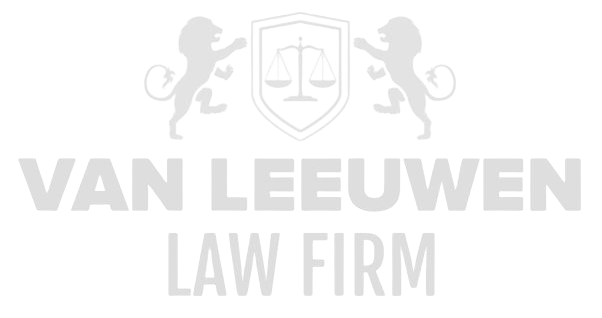Tax Evasion and Tax Fraud constitute one of the most pressing and multifaceted challenges within the domain of financial crime today, reflecting a complex interplay between deliberate legal evasion and sophisticated manipulation of fiscal frameworks. In this ever-evolving landscape, both corporations and private individuals systematically seek to circumvent their tax obligations or exploit loopholes within tax regulations to artificially minimize their tax burdens. This conduct transcends mere financial implications—it erodes the foundations of public finance, distorts fair market competition, and fundamentally undermines public trust in the integrity of tax systems and the rule of law. For those in governance, an unambiguous and profound understanding of the diverse manifestations of tax evasion is indispensable. This includes, but is not limited to, the deployment of offshore entities, transfer pricing distortions, and the concealment of income streams. Equally crucial is the establishment and rigorous enforcement of effective internal controls designed to detect and mitigate these risks proactively before they escalate into full-blown fiscal misconduct.
The legal demarcation between legitimate tax planning and unlawful tax evasion is notoriously blurred, presenting a labyrinthine challenge for directors and executives striving to navigate compliance without overstepping legal and ethical boundaries. Tax fraud and evasion are frequently enmeshed in international tax structures and a web of complex, overlapping regulations that demand not only deep fiscal expertise but also continuous vigilance and adaptive oversight. It is incumbent upon leadership to architect a transparent and principled tax strategy that harmonizes strict adherence to laws and regulations with the broader societal expectations and reputational considerations of the enterprise. Embracing a proactive and ethically anchored approach to tax compliance transcends mere legal obligation—it constitutes a moral imperative essential to safeguarding the longevity and sustainability of the organization. The ramifications of tax fraud extend well beyond financial penalties and criminal prosecutions; the public revelation of fiscal improprieties can inflict severe reputational damage, erode customer trust, and provoke market exclusion or boycotts. Therefore, it is imperative for leaders not only to invest in preventive mechanisms but also to cultivate an organizational culture that champions fiscal integrity and transparency. Effectively confronting tax fraud demands close collaboration with tax advisors, compliance officers, and legal experts, alongside the development of robust internal reporting channels that enable the early identification and resolution of potential risks.
Difference Between Tax Evasion and Tax Fraud
The distinction between tax evasion and tax fraud is not only of theoretical importance but also has far-reaching consequences for enforcement and criminal prosecution. Tax evasion in some legal systems is seen as a form of illegal tax avoidance that exploits loopholes or differences in interpretation. This means tax evasion often occurs in a gray area between what is strictly legal and what is considered ethically acceptable. It involves consciously chosen strategies within the law’s boundaries, even if sometimes contrary to the spirit of the law. Tax fraud, on the other hand, involves the intentional violation of the law with the aim of avoiding tax payment through deception, forgery, and concealed transactions. The legal consequences of tax fraud are usually more severe because it is regarded as a criminal offense that leads to criminal prosecution, including imprisonment.
This nuance is crucial for tax authorities, lawyers, and judges tasked with assessing fiscal misconduct. Defining the boundary between legal tax planning, aggressive tax avoidance, and actual fraud is often complex and requires in-depth knowledge of tax law, case law, and the taxpayer’s intent. Moreover, the interpretation of intent plays a key role: tax evasion requires intent or conscious negligence, whereas tax fraud also involves active manipulation and falsification of data. This distinction partly determines the severity of penalties, the nature of investigative methods, and how society perceives and complies with tax obligations. In an era where fiscal constructions become increasingly complex, the differentiation between evasion and fraud remains a central topic of discussion within fiscal and legal literature.
From a policy perspective, it is necessary to provide clarity to citizens and businesses regarding what is and isn’t permissible within the tax system. Ambiguity or unclear regulations can undermine trust in the tax system and leave room for interpretation differences that lead to tax evasion. On the other hand, enforcement must focus on identifying and effectively addressing tax fraud, deploying the legal toolkit, including criminal sanctions, to create deterrence. This requires a careful balance between providing legal certainty and preventing unjust tax evasion and fraud. Only by sharply defining and operationalizing this distinction can fiscal integrity be safeguarded.
Common Methods
The methods used to evade or commit tax fraud are diverse and often highly sophisticated, employing both simple tactics and intricate financial constructions. One of the most common techniques is submitting false tax returns, where income is not fully declared or expenses are artificially inflated to reduce taxable income. This can range from simply not reporting cash income to manipulating financial accounts. Another frequent method is maintaining double bookkeeping, where, alongside the official records, a hidden set of books is kept to conceal actual income and transactions. This technique is often combined with cash payments to erase traces of income streams.
Additionally, the frequent use of so-called sham constructions or artificial corporate structures set up without real economic substance is widespread. This may involve sham self-employed individuals, fictitious invoices, or nonexistent transactions aimed at avoiding tax liabilities. These methods are often difficult to detect because they exploit legal and administrative complexity to avoid supervision. In business contexts, these constructions are sometimes supported by accountants, tax advisors, and lawyers who design and implement fiscal strategies. This creates a complex web of transactions that makes it extremely difficult for tax authorities to trace real income flows and liabilities.
These techniques pose a threat not only to fiscal revenues but also to transparency and fairness within economic transactions. The use of such methods demands a multidisciplinary enforcement approach combining legal expertise with financial and technical knowledge. Developing specialized investigative capacities and strengthening collaboration between fiscal and criminal justice agencies is essential to effectively combat these widespread yet complex methods. Only with advanced investigative techniques and sufficient authority can it be prevented that such illegal practices go unpunished and cause further societal harm.
International Tax Evasion
The globalization of the economy has led to a significant increase in international tax evasion, whereby cross-border structures and jurisdictions are exploited to avoid tax payments. International tax evasion makes use of tax havens, countries with very low or zero tax rates, often accompanied by strict confidentiality rules. Multinational corporations and wealthy individuals place assets and income streams in such jurisdictions to effectively avoid taxation in their home country. Shell companies—entities without real economic activity in the country of registration—are frequently used to channel money flows and thus conceal the fiscal origin of income.
An important mechanism in international tax evasion is transfer pricing, where multinationals artificially set prices for transactions between their own group entities. Prices of goods, services, or intellectual property are set in such a way that profits are shifted to countries with favorable tax rates, while losses are realized in higher-tax countries. This leads to significant tax avoidance and is recognized by international organizations such as the OECD as a major source of global tax avoidance. The complex legal and economic structures used for this purpose make detection and proof very challenging.
Combating international tax evasion therefore requires intensive cooperation between countries, sharing tax information, and establishing common rules. Initiatives such as the OECD’s BEPS project aim to reduce tax avoidance practices by multinationals and close loopholes in tax legislation. Furthermore, transparency around ultimate beneficial owners (UBOs) is crucial to identify the real owners of offshore structures. International treaties and automatic exchange of financial information have become indispensable tools in the fight against cross-border tax evasion, but their effectiveness depends heavily on political will and implementation in participating countries.
Role of Tax Authorities and Supervisory Bodies
Tax authorities and supervisory bodies play a central role in detecting, preventing, and sanctioning tax evasion and tax fraud. Their task goes beyond passive tax collection; they must actively analyze risks, recognize signs of fraud, and apply investigative methods suited to the complexity of fiscal crimes. This requires specialized teams within tax authorities equipped with advanced analytical tools, data mining, and forensic investigation techniques. Controls and audits are essential instruments to detect anomalies and confront taxpayers with irregularities. When fraud is suspected, in-depth investigations can be launched, often in cooperation with criminal law enforcement agencies.
Enforcement measures range from warnings and additional assessments to criminal prosecution and asset seizures. Tax authorities must operate carefully within the rule of law while acting decisively to send a clear message that tax evasion and fraud will not be tolerated. This requires not only legal expertise but also a strategic approach in which priorities are set based on risk analyses. The impact of enforcement is strengthened by transparency and communication with the public, thereby increasing support for tax compliance.
Moreover, there is a growing need for cooperation between tax authorities themselves and with other supervisory bodies such as financial investigative units and anti-money laundering agencies. This integrated approach increases the effectiveness of detection and enforcement, especially in cases where fraud occurs in a cross-border context. Establishing information-sharing platforms and joint task forces is essential to confront the increasingly complex methods of tax evasion and fraud. Only through a proactive, multidisciplinary, and international approach can tax authorities and supervisors maintain and strengthen trust in the tax system.
Cooperation Between Countries
International cooperation is essential in combating tax evasion and tax fraud, especially since these activities often have cross-border dimensions. Countries increasingly exchange tax information through bilateral and multilateral agreements, enabling tax authorities to better monitor taxpayers’ income, assets, and transactions. Organizations such as the Organisation for Economic Co-operation and Development (OECD) play a central role in coordinating international initiatives, such as the Base Erosion and Profit Shifting (BEPS) project, which aims to counter aggressive tax avoidance by multinationals and protect tax bases.
With increasing globalization and digitalization, it has become more challenging for tax authorities to identify and address complex cross-border tax evasion schemes. Improving information exchange, harmonizing regulations, and collaborating on investigations and enforcement are therefore crucial pillars for effectively tackling tax evasion. Furthermore, transparency requirements and automatic reporting standards, such as the Common Reporting Standard (CRS), are important tools that strengthen cooperation and data exchange between countries.
Cooperation between countries also includes joint operations and sharing best practices, allowing tax authorities to support each other in developing expertise and deploying new technologies. This collective approach enhances the effectiveness of individual countries and contributes to a fairer and more efficient international tax environment. The importance of international collaboration continues to grow as tax evasion and fraud take on increasingly sophisticated and professional forms.
Technology and Data Analysis
The use of advanced technologies and data analysis has become indispensable in the fight against tax evasion and fraud. Modern tax authorities employ artificial intelligence (AI), machine learning, and data mining techniques to sift through vast amounts of financial data and detect suspicious patterns indicative of potentially fraudulent behavior. These technologies enable authorities not only to identify known risks more quickly but also to uncover new, previously unknown forms of tax evasion.
Data analysis helps map out complex transaction chains, detect sham structures, and expose hidden assets and income flows. By combining internal data sources with external information, such as banking records, commercial registries, and international reports, tax authorities can gain a much clearer picture of taxpayers’ fiscal situations. This allows for more targeted and efficient enforcement actions.
Continuous technological advancement requires tax authorities to invest in staff training and the development of specialized teams proficient in the latest tools and analytical methods. At the same time, the use of technology must be balanced with privacy and data protection safeguards to maintain the trust of citizens and businesses. A careful balance between innovation and ethics is essential to deploy technology effectively and responsibly in tax enforcement.
Sanctions and Criminal Law
Imposing sanctions and pursuing criminal proceedings constitute powerful tools in combating tax evasion and tax fraud. Financial penalties and additional tax assessments are commonly used measures to punish offenders while recovering outstanding taxes. These sanctions can be substantial and often serve as a strong financial deterrent against tax fraud.
In more severe cases, criminal prosecution is initiated, where individuals may face imprisonment and criminal convictions. Criminal proceedings can target individual taxpayers as well as companies and their executives, especially in cases involving organized fraud or large-scale tax evasion. The threat of criminal sanctions thus plays a significant role in deterring fiscal crime.
Sanctions also include measures such as asset seizure, disqualification from certain rights, and the publication of criminal judgments. These actions not only help restore financial losses but also maintain public confidence in the tax system and the rule of law. An effective sanctions policy requires coordination between fiscal, civil, and criminal procedures to achieve maximum impact.
Tax Avoidance by Multinationals
Multinational corporations often engage in strategic tax planning to reduce their tax burden, for example by shifting profits to jurisdictions with low or zero tax rates. These practices, which often operate within legal boundaries, are known as tax avoidance and present a complex challenge for national and international tax authorities.
Methods of tax avoidance by multinationals include transfer pricing, whereby internal transactions between subsidiaries are set in a way that shifts profits to countries with favorable tax regimes. The use of intellectual property and other intangible assets is also significant, as these assets can be easily positioned in low-tax jurisdictions.
Addressing tax avoidance by multinationals requires an integrated approach, including legislative adjustments to counter such practices and strengthening international cooperation. Initiatives such as the OECD’s BEPS project provide frameworks and recommendations to better protect tax bases and combat aggressive tax planning. At the same time, transparency is crucial to reveal the actual economic activities of multinationals and prevent tax avoidance from undermining public trust.
Transparency Initiatives
Transparency forms a crucial tool in the fight against tax evasion and tax fraud. Initiatives such as maintaining public registers of ultimate beneficial owners (UBOs) provide insight into who truly stands behind legal entities. This prevents the misuse of corporate structures by hiding ownership and creating complex arrangements that hinder the identification of suspects. The public availability of this information encourages responsible behavior and increases detection opportunities for regulators.
Furthermore, the automatic exchange of financial information between countries, known as the Common Reporting Standard (CRS), plays an important role. This standard requires financial institutions worldwide to report information on accounts held by foreign taxpayers to their respective tax authorities. This makes it virtually impossible to secretly funnel capital into offshore accounts. CRS fosters international cooperation and ensures a continuous flow of data essential for effective oversight and enforcement.
Transparency initiatives are not only a technical enhancement of supervisory capabilities but also contribute to strengthening public trust in the tax system. When citizens and businesses know that openness and control exist, the moral basis for tax compliance is reinforced. This makes transparency a fundamental element of a fair and effective tax system.
Prevention and Education
Prevention and education are indispensable pillars in avoiding tax evasion and tax fraud. Providing information to citizens and businesses about tax obligations, rights, and risks forms the foundation of a proactive approach. By highlighting the consequences of illegal practices and the importance of proper tax payment, unintentional errors can be prevented and awareness can be increased.
Educational programs, campaigns, and information dissemination focus on promoting fiscal integrity and reducing the opportunities for deception. This also includes strengthening the expertise of tax professionals, who play a crucial role in advising clients and ensuring compliance. Preventing fraud often starts with solid knowledge and understanding of the rules, both among taxpayers and advisors.
Effective prevention requires an integrated approach where education goes hand in hand with control and enforcement. By recognizing signals early and supporting citizens and businesses in compliance, the risk of tax fraud and evasion can be significantly reduced. Thus, prevention and education contribute to a more stable, just, and transparent tax environment.











